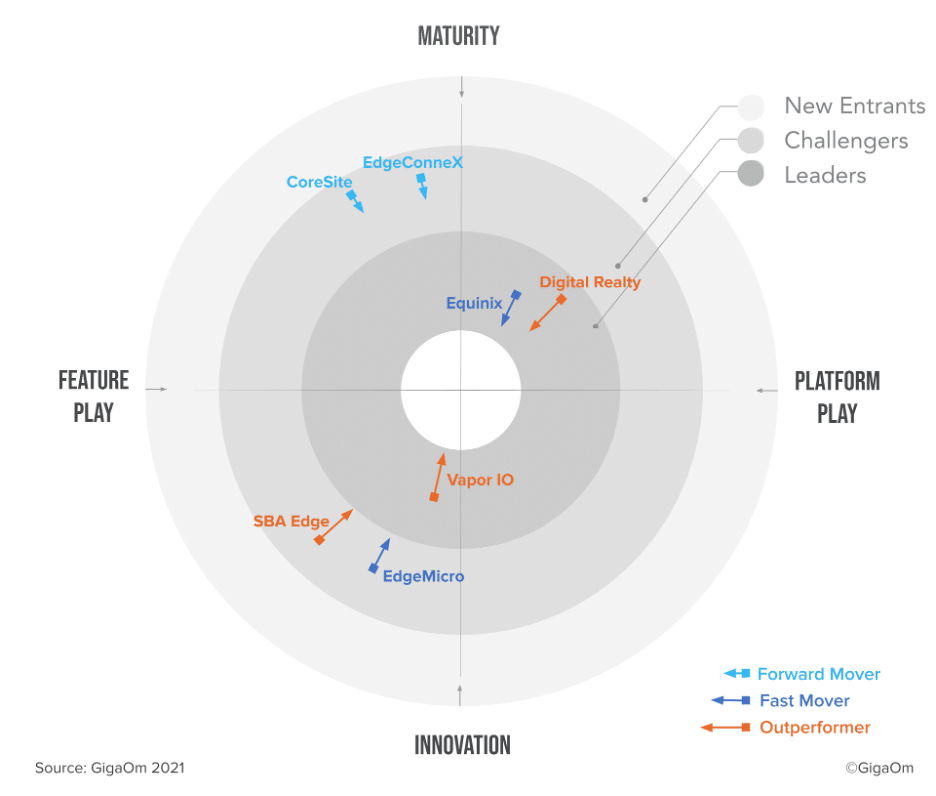Jumping Into the Vapor

My first exposure to Vapor IO — initially Cole Crawford and Andrew Cencini — was in early 2016 while I was at Mesosphere, during the lead up to the launch of the open source DC/OS project.
I was impressed by how quickly the Vapor IO team adapted their technology to work with DC/OS with very little help from Mesosphere. They integrated their OpenDCRE (Data Center Runtime Environment) with DC/OS in order to expose lower-level infrastructure telemetry to the DC/OS application layer for improved scheduling of workloads. By marrying real time infrastructure data with application needs, Vapor IO was showing us their vision for a completely automated or “unmanned” data center.
Data is only useful if it’s acted upon. The Vapor IO team lives and breathes this, which is why their tagline is “Data. Driven.” It also explains why the data driven data center is central to the entirety of the Vapor IO mission.
One of the most impressive demonstrations of the data driven philosophy is Vapor IO’s currency-based scheduler, which uses data from OpenDCRE to calculate the real time cost of running workloads on private data centers versus public clouds—and then actually moves said workloads to optimize for cost.
Vapor IO uses real time data to help operators automate their data centers in highly effective ways. With accurate and timely cost information, operators can use Vapor IO to automate scheduling and migration of workloads across multi-data center, multi-region, and multi-cloud environments.
I saw this for the first time over Chicken Saltimbocca. Cole was flying out of SFO and I had just flown back, so we had a few hours of overlap where we met at Café Figaro, the Italian restaurant near the airport in Burlingame. He showed me a killer demo where Kafka was running across three data centers in a hybrid configuration: AWS US East, AWS US West and Vapor IO’s co-location facility in Austin. Right there, on Cole’s laptop, I saw the power of real time visibility into the cost and performance differentials, where Vapor IO would empower customers to make better (and highly-automated) workload placement decisions.
For me, this is when the lightbulb went off. Unlike most of the industry’s hand-waving around hypothetical hybrid use cases, Vapor IO was making it real. For the first time in my career, I was seeing a realistic approach to hybrid. Amidst all the industry cloud washing inherent in the topic, Vapor IO stood out as a tangible vehicle.
This was just part of the Vapor story. The software story.
It’s all about physics
Vapor IO recognizes that at the end of the day, it’s iron in the racks. You can’t make changes with software only. You have to go all the way down to the physics to really change what is happening in the data center.
The Vapor Chamber is a new circular racking architecture designed by Vapor IO to provide for unprecedented improvements in power utilization, construction cost and compute density in both existing and new data centers. Vapor IO licenses the Chamber design to manufacturing partners, who are able to make them available to data center operators, telcos, cloud service providers and enterprises with private data centers.
What really convinced me was spending time with Goldman Sachs (one the largest data center operators in the world and also one of Vapor IO’s lead investors). The Goldman experts explained to me the benefits of the Vapor Chamber—how a circular rack, with the “hot aisle” in the center and a massive centralized fan for efficient air movement—would change how data centers are built and operated.
Cole explained to me how they came up with the “Chamber” part of the story—which the company licenses for manufacturing—and which will change the very nature of physical infrastructure.
Mixing work and play
An avid skydiver, Cole had the brilliant idea to build the Vapor Chamber using the same airflow and architecture of a skydiving emulation tunnel. After a jam packed day of meetings in Austin he took me to one to experience it for myself. Having never skydived before (preferring to fly down a mountain on a snowboard)—Cole was adamant that I needed to see it first hand. The circular skydiving “chamber” uses a giant fan to force air upward with significant enough force to allow a human to be suspended in mid-air (and do some pretty badass tricks if you are Cole).
While there have been significant and revolutionary advancements in the data center around virtualization, converged infrastructure, containers, microservices and software defined everything…nobody had the vision before to completely redesign the physical makeup of the actual racking.
The edge is near
Vapor IO is not just revolutionizing how we build and operate data centers, it’s also changing the very nature of the cloud itself as more and more computing is pushed to the edge. This is where Vapor technology really excels. Imagine Vapor Chambers and Vapor software running in thousands of micro data centers—in cell towers, urban office basements, parking lots, and airports—providing highly-optimized, local compute for low-latency applications including IoT, autonomous driving, AR/VR and specialized mobile apps.
The ability to run serious workloads at the edge will drive much of the “IoT action” and will be one of the defining attributes of our next generation clouds. Modern, high-speed applications will demand astonishing amounts of edge compute, which will augment our existing centralized data centers. Vapor IO is at the center of the edge revolution, partnering with cloud operators, telcos and forward-thinking enterprises to extend today’s cloud, taking compute all the way down to the local level—within a few hundred feet of the applications that demand it. This will happen very soon and will transform the products and services in our lives.
Thinking back to some of the work we were doing at Akamai in 2003 around edge computing and Edge Side Includes with Jay Parikh for content delivery made me realize that hundreds, if not thousands, of data centers close to the actual endpoints would enable new classes of applications that today are nearly impossible to deliver with centralized clouds because, frankly, the speed of light is too slow. Because of our never-ending hunger for new uses of technology, many of them require very low latency and massive amounts of compute, I envision a future where data centers are going to be everywhere….that we will need massive amounts of compute locally and sub-regionally, not just regionally and centrally…and that Vapor IO will help bring about this revolution.
Marc Andreessen is right: Software is eating the world. But in order for that to happen there will have to be highly efficient, unmanned compute (and network and storage) in massively distributed quantities—where workloads get close to the application and are scheduled to run at the right place, at the right time, in real time, at the optimal cost.
The future of cloud is much closer as a result of the vision of Vapor IO. I could not be more thrilled to join the Vapor team on this journey. Stay tuned…this is a major disruptor to the way we think about cloud and computing.
Wheels Up,
Mark




